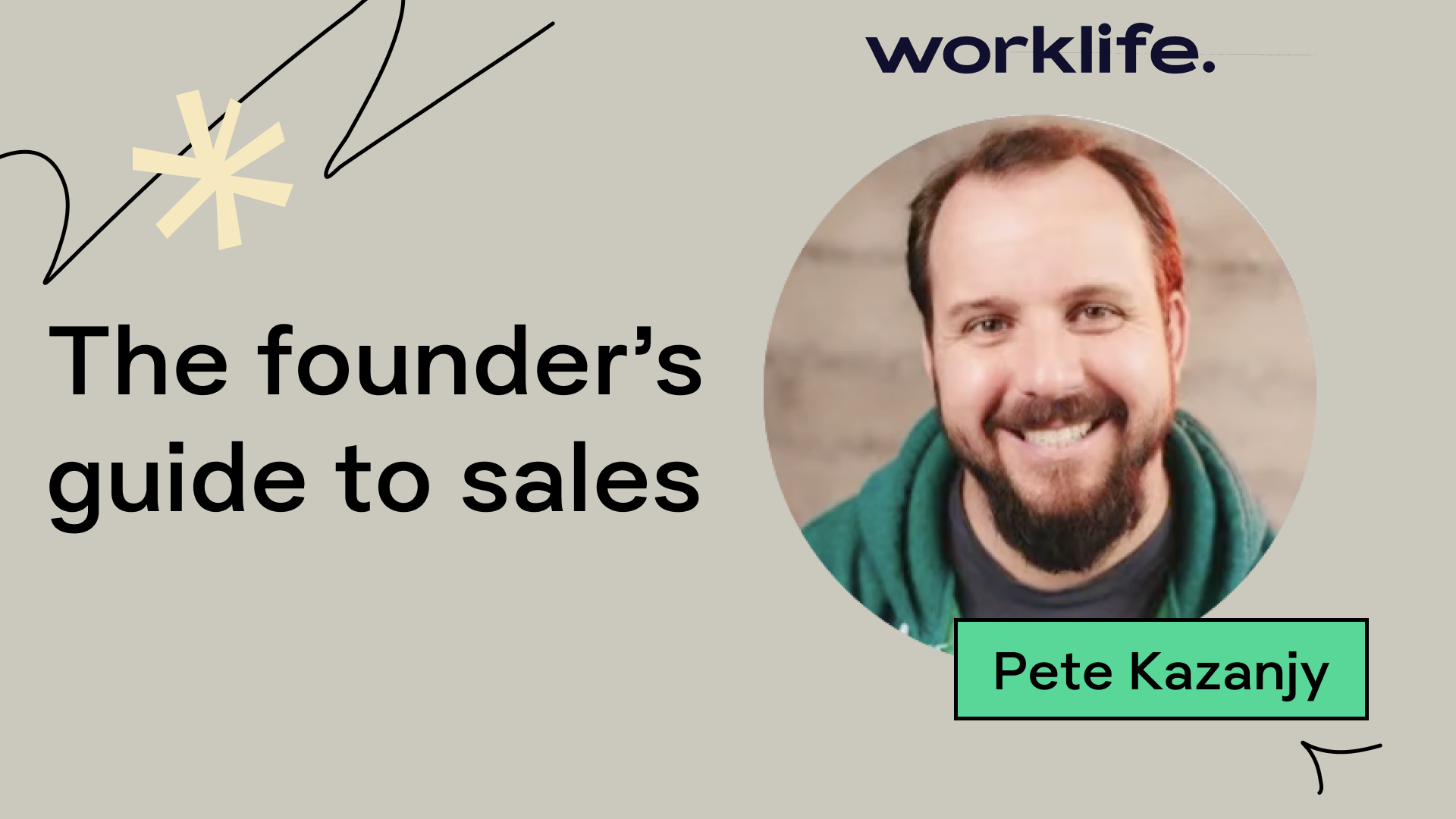The fastest growing software companies in recent years have something in common.

They started with no sales team.
A term coined by OpenView Ventures, product-led growth (PLG) describes a go-to-market strategy that puts the product front and center at every stage in the customer journey – making product usage the primary driver of user acquisition, retention and expansion.
PLG has played a transformative role in the growth of many of the biggest names in enterprise software: Slack, HubSpot, Intercom, Lucidchart, Mixmax, Typeform, just to name a few. PLG also played a central role at Zendesk, where I focused on demand generation and GTM strategy through multiple iterations of our go-to-market organization including self-serve, up-market, and account-based marketing.
It’s easy to see why PLG is so attractive to both tech company CEOs and investors. PLG jump starts revenue through low-cost channels, runs a wide variety of experiments, and predicts outcomes and revenue more accurately than many traditional go-to-market motions. In addition, even though PLG is operationally light, it has proven to be an effective way to gain traction quickly, even in competitive markets.
Another appealing attribute of companies who are able to use a product led strategy is their maniacal focus on selling directly to the end user of the product and a strong understanding of an entry point to land and then expand within an organization. This is critical information for any company, but especially for those in the fast-moving world of SaaS products.
The opportunity some product led companies miss, however, is integrating a sales team to get the most out of their PLG strategy. It may seem counterintuitive at first, but PLG and Sales are not mutually exclusive. In fact, together, they make a very powerful combination.
PLG and Sales – Not an Either/Or Proposition
PLG is a very effective way to unlock early revenue growth, but it does have its limitations. There are certain challenges that face any company relying heavily on self-serve users. For one thing, self-serve users typically churn at a much higher rate than users who have the support of a customer success team or inbound SDRs. A lack of focused support and/or sales guidance also leads to self-serve users tending to have a really low expansion rate. On average, only 15 to 20 percent of freemium users will convert on their own to paying customers.
Despite these facts, companies with technical founders or a naturally more product led culture may find it difficult to layer in the sales function. Even before such a company starts tackling the tasks of finding the right kind of salespeople and sorting out who owns which responsibilities, there are other, more basic hurdles to clear. For example, teams that have seen their initial PLG strategy take them extremely far may not feel any sense of urgency to rock the boat by introducing a new element.
It’s easy to get addicted to self-serve growth once you’ve found a strategy that works, it’s predictable and fairly low-touch. But often times, focusing strictly on PLG puts a company at risk of overlooking the potential value of expansion revenue, and that’s where you really start to see meaningful traction with SaaS companies.
I tend to think about sales as a support system or a kind of superpower. Looking at Sales through this lens can be especially helpful for people who are coming from a product background and may lack a full understanding of the capabilities and functions of a sales team.
A Different Kind of Sales Team – Product-minded Sales
Product teams tend to have grand visions for their products. Even as they are just starting to see traction with their initial hero use case, they are already thinking ahead about how to evolve that product into a platform. Sales teams, on the other hand, make sure no one is leaving money on the table. They add value by mining for opportunities to layer additional revenue on top of the initial product’s success and create a plan that allows the company to drive expansion revenue and product development in parallel.
As an example, when I joined Zendesk, we built out an entire product suite including everything from live chat, a robust analytics offering, and one of the industry's first AI-powered customer support solutions. Over a fairly short period of time, we essentially went from offering one product to offering seven. We discovered that while most of our early customers understood how to use Zendesk for customer support, they weren’t able to fully utilize the entire suite of new products on their own. We recognized the opportunity to educate our existing customer base and took advantage of it by bringing in Sales to focus on expansion revenue.
SaaS businesses have a unique opportunity to engage in what I call “product-minded sales.” This approach of adding a consultative layer into the sales motion allows you to become an in-house expert and thought leader for your customers. It involves spending quality time with early customers so that you have the knowledge to perform deep account optimization, layering in new features and premium functionality that will educate your customer and ultimately influence their core KPIs.
Because product-minded reps require ongoing training and serve as the gatekeeper between product teams and customers, it’s important to be aware of other influencing factors:
Product Complexity: To successfully consult with customers, a salesperson has to have broad and deep knowledge about the product. The more technically complex a product is, the more technically savvy a salesperson needs to be. SaaS companies that sell directly to developers, for instance, need sales people who deeply understand how to engage with developers and drive a more technical discussion.
Sales Associate Motivations: Traditional salespeople get excited about hitting quotas. Product-minded salespeople get excited about becoming technology experts. They aren’t just hungry for the sale; they want to understand the product in a deep and meaningful way
Internal Training Capabilities: Once you’ve found salespeople who are excited about becoming experts, you need to make sure you have the resources to properly train them. There are a number of companies (Lessonly, for one) who do this at scale.
At Zendesk, one area we focused on was layering in competitive analysis as a key component of new sales rep training. This was invaluable to reps as they got into conversations about how Zendesk compared to the new competitors who were entering the market at the time. We also gave our reps technographic data to identify which internal tools a prospect was already using so that they could have rich discussions on current pain points, ways to improve existing workflows, and ultimately add value from the first conversation.
Team Structure – The Right Set Up
In addition to how to find and train the right kind of salespeople, another question that frequently comes up is how to structure PLG and sales teams within a company. There are a number of models to consider.
In some cases, an independent pod structure that combines a product manager, engineers and marketers makes sense. Other companies prefer to start out with the growth team reporting to a VP of Product, someone who owns the entire product experience.
Sometimes, teams are organized around different parts of the funnel—one team owns acquisition while another team owns engagement and retention and so forth. This model gives teams clear ownership and a unique ability to specialize.
At Zendesk, we started out with an online business unit, which was essentially a PLG team that included our web engineers, data science and marketing. This team handled paid acquisition, homepage optimizations and in-product experiments.
While an online business unit is highly effective for acquiring self-serve users, a sales-assisted growth team focused on inbound and outbound sales can be a powerful tool to drive more high-touch activities, for example, converting free trial users to paid users.
Many startups today start with a product led growth motion, which starts by building a product experience where the end-user can easily try, buy and use the product with little to no human touch. Calendly, a viral calendar application with over 2 millions users, allows you to try the product for free (simply enter your email address on their homepage). After your two-week free trial ends, you will automatically be downgraded to the free version unless you decide to enter your credit card information to upgrade to a premium subscription. There is no contact with a salesperson at any point during the buying process.
With every product led growth strategy, it’s critical to establish clear tracking and attribution across the marketing and sales funnel. As your startup starts to scale, you’ll need to watch for blind spots and make sure every lead is tracked and nurtured accordingly by automated nurture campaigns and sales check-ins.
PLG (and Sales) – Here to Stay
PLG is more than just a cost effective go-to-market motion for startups, it’s also a strategy that aligns well with how consumers want to buy software today. The bottoms-up nature of PLG gives more power to the functional experts within a company, which means each team can choose best of breed tools without additional layers of approval.
In addition, a PLG strategy eliminates the need for big, multi-year contracts, which can be constricting both for the buyer and for the technology solution. Many buyers don’t want to get locked into an annual contract. And what many SaaS companies discover is that a bottoms-up approach allows for a more collaborative customer relationship that ultimately translates into greater flexibility around product development.
Interestingly, it’s not only early-stage companies that are taking advantage of PLG. There are a growing number of big players, including companies like Salesforce and HubSpot, that are currently implementing small internal motions to add self-serve experiences to different parts of their products. I expect we’ll see more acquisitions of highly viral SaaS products that deeply understand technology integrations and how to sell using a bottom-up motion, rather than a top-down sale.
While it’s clear that PLG is here to stay, my advice to startups is don’t rely on PLG alone. Even the most viral SaaS products ultimately add a sales team. Continue to invest in your self-serve product experience, while you build your army of product-minded sales reps.





